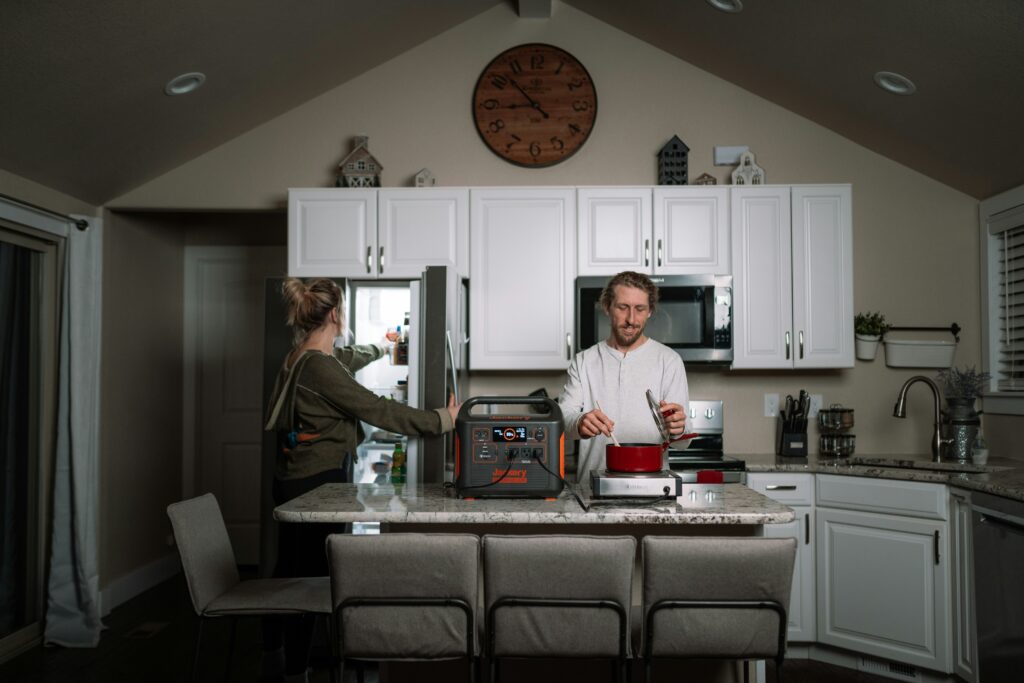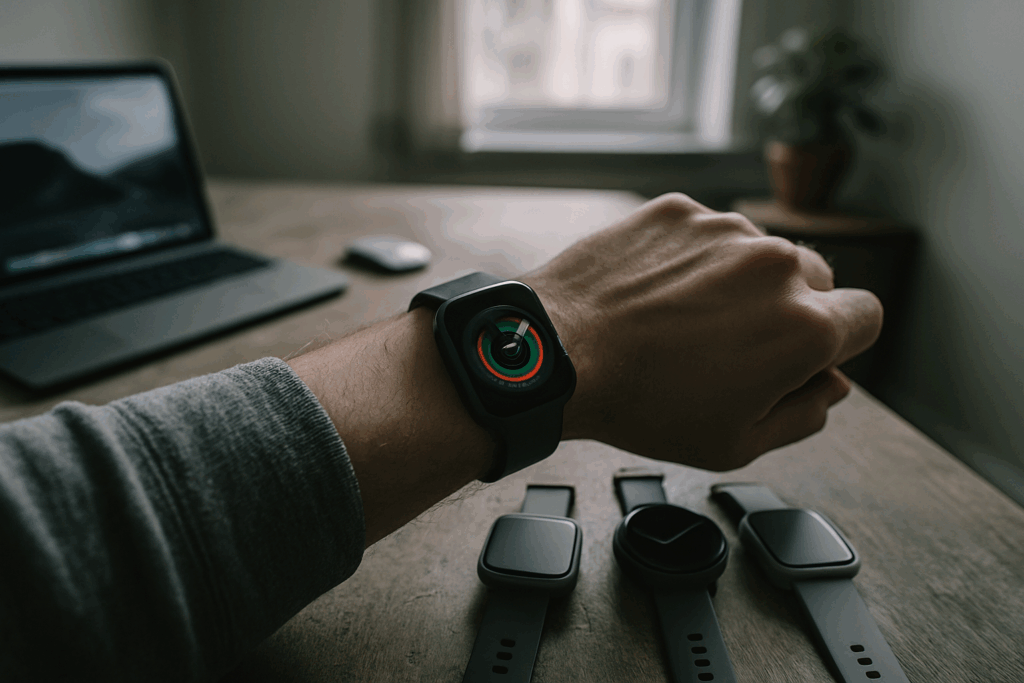Power Stations in Real Life: Where They Matter Most
Portable power stations are no longer just cool gadgets. In 2024, they’re essential tools for flexibility, independence, and peace of mind. Whether you’re off-grid for an adventure or prepping for outages at home, matching the right features to your lifestyle makes all the difference.
Key Use Cases
Understanding where you’ll use a power station helps narrow down the features that matter.
-
Camping and Overlanding
-
Power small appliances, charge cameras or drones
-
Quiet operation and portability are high priorities
-
Solar charging can extend trips without plugging in
-
Emergency Home Backup
-
Keep fridges, CPAP machines, or lights running during outages
-
Need higher-capacity batteries and fast recharging options
-
Some models integrate into home systems seamlessly
-
Mobile Workstations
-
Power laptops, monitors, and routers in remote locations
-
Look for consistent output and power delivery through multiple ports
-
Portability paired with high wattage is key for productivity
Battery Capacity vs Real-World Usability
Don’t be fooled by big numbers. What matters isn’t just watt-hours on paper, but what devices you can run and for how long.
- Establish your baseline needs: Make a list of devices you want to power and their wattage
- Account for inefficiencies: Inverters and heat reduce ideal output
- Look for practical test results or runtime estimates over theoretical max output
Battery specs are important, but real-world testing or user reviews give better insight. Always weigh size and weight against actual run-time performance.
Port Variety: Why It Matters
Having plenty of ports is more than just convenience. It’s about compatibility and flexibility.
- AC ports: For larger devices like mini fridges, TVs, or laptops
- DC ports: Great for car fridges or other 12V gear
- USB-A and USB-C: Essential for phones, tablets, cameras, and modern laptops
Look for models that can charge multiple device types at once without overloading. More ports mean more flexibility across scenarios.
Investing in the right power station means asking not just what it can do, but what you need it to do regularly, reliably, and safely.
Bluetti AC200MAX
If you’re planning a real off-grid stretch, the Bluetti AC200MAX is the workhorse you want in the backseat. This is not for Sunday picnics or topping off a phone. It’s for serious power users who need a full setup off the grid for days, maybe weeks.
The pros are big and obvious. You get a massive 2048Wh base capacity, which can be expanded with additional battery packs. It handles multiple devices at once without breaking a sweat and includes a well-rounded set of ports. AC, DC, USB-C, even wireless charging on top—it’s all here.
But heavy-duty has a cost. Physically, the thing is a beast. At over 60 pounds, it’s not coming with you on a flight or down a trailhead without a serious cart. It’s built like a tank and moves like one, too. Portability suffers.
Still, if you’re on extended trips, running a mobile workstation, or prepping for power outages that last more than a day, it’s a powerhouse you can count on.
Common Mistakes When Choosing a Portable Power Station
When selecting a portable power station, it’s easy to be swayed by big numbers, sleek designs, and flashy features. However, choosing the wrong unit can lead to disappointing performance or unnecessary expense. Here are some of the most frequent pitfalls to avoid.
Overpaying for More Capacity Than You Actually Need
One of the most common beginner mistakes is assuming that higher capacity automatically means better value. While having ample watt-hours might seem like the safe route, a larger unit often weighs more, costs considerably more, and might offer more power than you’ll ever realistically use.
- Assess your actual energy needs based on the devices you plan to power
- Match watt-hour capacity to usage, not guesswork
- Consider portability — large units can be bulky and inconvenient
Ignoring Recharge Times and Solar Compatibility
A power station is only as useful as its ability to recharge quickly and reliably. Ignoring how long it takes to top off a unit or whether it supports solar input could leave you without power when you need it most.
- Check AC and solar input rates — not all power stations recharge equally fast
- Look for solar compatibility if you’ll be off-grid or on the move
- Fast recharge cycles can make a smaller unit more practical in many situations
Choosing Form Over Function
Design matters, but functionality should always come first. A sleek power station might look good in your setup, but poor interface design, awkward port placement, or limited output options can quickly become frustrating.
- Prioritize performance features over aesthetics
- Inspect port variety and number — ensure it fits your gear
- Read user reviews for real-world functionality, not just brand promises
When evaluating a portable power station, wattage is ground zero. You’ve got two numbers: running wattage and peak wattage. Running is what the generator can churn out steadily without breaking a sweat. Peak is the surge it can handle for short bursts — like when a fridge kicks on. If your gear needs 1000 watts to operate, and your power station only delivers 800 running watts, you’re not covered.
Next up is recharge time. Fast-charging through AC outlets is convenient, especially if you’re short on prep time. But if you’re off-grid or camping, solar input becomes key. Some models sip power slowly from panels, others gulp it down at higher rates. Check the actual charge times, not just the watt specs — they vary more than you’d expect.
Then there’s build quality and portability. If a power station has a flimsy handle or thin casing, it’s not lasting long in the field. Look for solid construction, a comfortable grip, and reasonable weight. A 30-pound unit may sound manageable until you’re lugging it a quarter-mile to camp. Balance features with how you’ll actually be using it.
Think of It Like Choosing Your Phone
When selecting your vlogging setup, the logic is surprisingly similar to picking the right smartphone—it’s all about balancing performance, endurance, and flexibility. Rather than obsessing over flashy upgrades or niche features, creators should prioritize tools that make a real difference in their daily workflow.
What Matters Most in Your Gear
Consider your gear like a device you’ll use every single day. Choose tools that support your vlogging goals, not distract from them.
- Performance: Can your gear handle high-quality video consistently without lag or overheating?
- Endurance: Battery life, storage capacity, and reliability—these affect your ability to shoot on the go.
- Ports and Connectivity: Just like phones, connectivity options make a huge difference. Can you plug in mics, lights, or external monitors easily?
Finding Your Ideal Setup
Skip the hype, and ask: Does this gear make vlogging easier, faster, or more fun?
- Choose efficiency over excess—avoid equipment that slows you down.
- Consider mobile-friendly setups if you vlog while traveling or on location.
- Invest in what improves your process, even if it’s not the top-tier model.
For a closer look at how consumer tech stacks up across categories:
Top Smartphones of 2024 Compared: Features, Performance, and Value
If you’re diving into content creation, outdoor vlogging, or just want a reliable power station for backup, here’s how the top picks stack up in 2024.
Best for most users: Go with the Jackery Explorer 1000 Pro. It’s balanced. You get solid output, decent weight, and good port selection. It won’t break your back or your budget, and it can handle typical vlogging setups—cameras, lights, drone chargers—no sweat.
Best for power users or backup planning: You’ll want to look at Bluetti or EcoFlow. These are overachievers. With higher power capacity and faster charging, they’re built for people who run heavier setups or need something dependable during outages. They also usually come with more outlets and digital control panels that make real-time monitoring simple.
Budget pick: If what you need is bare-bones or backup-on-the-go, entry-level options from Anker or lower-end Jackery models can do the job. Just know what you’re giving up—limited ports, smaller batteries, slower charging. Still, they’re light, inexpensive, and fine if your rig is simple.
Bottom line: match your power needs to your workflow. Paying less sounds great until your battery taps out mid-recording.
Power stations used to be something you grabbed for a camping weekend. Now, they’re crossing over into the everyday. With power outages, remote work, and digital nomad life on the rise, these aren’t just optional—they’re becoming household staples. Vloggers, in particular, are leaning on them for backup power during location shoots, vanlife setups, and home studios.
Don’t just buy something for one trip and call it a day. The smart move is to think long-term. If you need portability, sure, size matters. But also look at things like how many devices it can charge at once, how fast it recharges, and whether it fits into the rest of your setup.
If you’re investing, think beyond what’s trendy this year. Look for models that allow battery expansion or include software updates. Brands that treat these devices more like tech ecosystems—and less like isolated gadgets—are the ones setting creators up to win in the long haul.


 Isaac Lesureneric is a tech author at gfxrobotection focusing on digital security, automation, and emerging technologies. He shares clear, practical insights to help readers understand and adapt to the rapidly changing tech world.
Isaac Lesureneric is a tech author at gfxrobotection focusing on digital security, automation, and emerging technologies. He shares clear, practical insights to help readers understand and adapt to the rapidly changing tech world.

